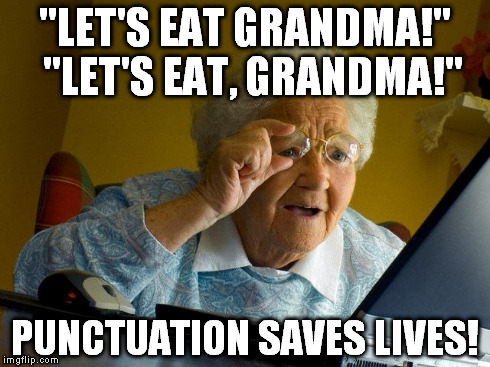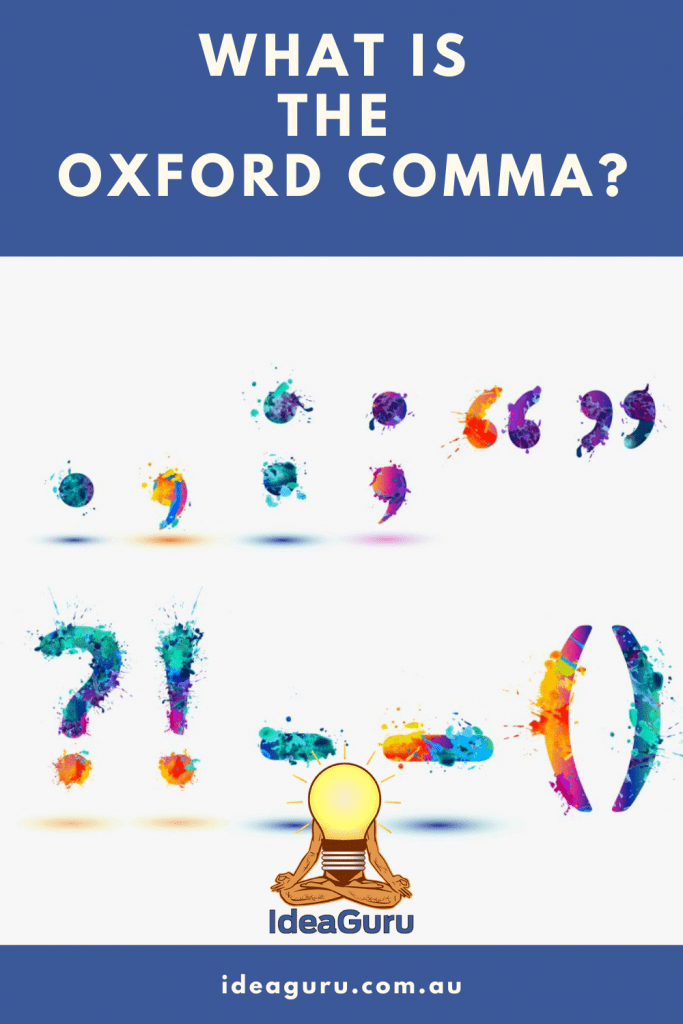Table of Contents
What is the Oxford comma, when to use it and is its use mandatory, has been one of the most divisive debates in English punctuation for decades. Some believe that its use has to be mandated for the sake of clarity. Some believe that the Oxford comma is superfluous, and yet others who think that it has to be used only when necessary.
In the United States of America, pupils are taught that the oxford comma is a must and use it unconsciously. Most American style guides, with the notable exception of the Associated Press Stylebook, advocate the use of the Oxford comma.
The Oxford comma is also known as the Harvard comma, series comma or the serial comma. The comma is named after Oxford and Harvard because both the university style guides mandate its use. Most scientific and medical research documents use the Oxford comma as a compulsion.
Surprisingly, despite being named after a British university, all except the Oxford style guide, request you not to use the Oxford comma except when it is needed for clarity. Most newspapers shun the series comma as it takes up valuable place in the narrow newspaper columns, but allow its use only when removing ambiguity.
In Australia, the Oxford comma is not widely used. The Australian government’s Style Manual for Authors, Editors and Printers says that “sometimes a comma is placed between the last two items to ensure clarity”, and does not mandate its use.
What is the Oxford comma?
The Oxford comma is the comma inserted between the penultimate item and conjunctions like and, or and nor in a series of three or more items.
For example:
‘Please give me a notebook, a pen, and a correction pen.’
The same sentence could be written as:
‘Please give me a notebook, a pen and a correction pen’, without any loss of clarity.
That is not, however, the case with this dedication by an author,
‘Dedicated to my parents, Ayn Rand and God.’
The statement seems to imply that either the parents were Ayn Rand and God or they were named Ayn Rand and God.
Written thus:
‘Dedicated to my parents, Ayn Rand, and God.’ there is no ambiguity in the statement.
On the other hand, the sentence could be rephrased as:
‘Dedicated to Ayn Rand, God and my parents.’
This makes sure that there is no misunderstanding whether you include the serial comma or not.
Those who are passionate about good punctuation argue in favour of the series comma, while those who are fervid about unencumbered writing renounce it. Many are not committed and choose to use the comma only when it is needed for clarity.
Let’s take a look at the arguments forwarded by those who favour the use of the Oxford comma and those who decry its use.
Arguments favouring the Oxford comma
Regionally used
Americans are generally thought to use the series comma from a young age. As such, teachers may not feel the need to discuss the last comma with their students.
It is also commonly used when method separating a list of items. When semicolons are used to separate a list of items, a semicolon would be placed before the last item. It is also argued that its omission may imply a stronger relationship between the last two items than exists.
Resolves ambiguity
Clarity and the elegance of writing is the biggest argument in favour of the serial comma. Not including this little bit of punctuation can drastically alter the meaning of a sentence. Using the last comma allows the writer to convey a message to the reader without any ambiguity.
A newspaper account of a documentary on Merle Haggard stated:
‘Among those interviewed were his two ex-wives, Kris Kristofferson and Robert Duvall.’
The sentence seems to imply that the two ex-wives of Merle Haggard are Kris Kristofferson and Robert Duvall. Including a comma after Kristofferson, would eliminate the ambiguity. It would tell the reader that Kris Kristofferson and Robert Duvall were interviewed in addition to Merle Haggard’s two ex-wives.
Another instance where the Oxford comma comes in handy is when there are groupings of items. For example:
‘I have coffee, bacon and eggs and toast for breakfast.’
Whether the eggs are grouped with bacon or toast is unclear in the sentence. Using a comma after eggs will clear the ambiguity.
‘I have coffee, bacon and eggs, and toast for breakfast.’

Resembles the spoken cadence of the sentence
When you read the above sentences, you will find that you pause before the penultimate item and ‘and’. The purpose of a comma or a semicolon is to induce a pause before you utter the next word.
We do precisely that when we speak, which conveys to the listener that the last two items are distinct and separate. Passionate advocates of the series comma argue that since we speak that way, the sentence has to be punctuated in the same way.
Arguments against the use of the Oxford comma
Although the arguments for the use of the Oxford comma are compelling, many oppose its use.
Not used regionally
Just as the Americans use the Oxford comma almost compulsorily, countries of the Commonwealth shun its use. Pupils are taught from childhood that there should not be a comma after the penultimate item and the conjunction, unless necessary.
Newspapers, whether American or otherwise, frown upon the use of the series comma because it takes up valuable print space.
Superfluous
Many people believe that the use of the Oxford comma is hypercorrect. Consider the sentence:
‘Dedicated to my parents, Ayn Rand and God’
It is obvious that God cannot be one of the parents of the author. That implies Ayn Rand is also not a parent and that the dedication is to three different entities.
Including a comma, just for the sake of it, is slighting the intelligence of your readers, they say.
Can introduce ambiguity
The Oxford comma, when used arbitrarily, can also introduce ambiguity. Consider the following sentence.
‘We worked with Mark, a mason, and John.’
It is implied that ‘we worked with Mark, who is a mason and John’. If they were working with three people, the series comma has to be removed. Or else the sentence has to be rephrased as:
‘We worked with Mark, John and a mason.’
Just rephrase the sentence
There is absolute confusion in this example.
‘They went to Sydney with Betty, a maid, and a cook’
Here it is unclear whether Betty is a maid or a maid is a separate person. Even when the serial comma is removed, it may be inferred that Betty is both the maid and the cook. If the ambiguity is to be resolved the sentence has to be necessarily reworded to include Betty as the third person who accompanied them.
‘They went to Sydney with a maid, a cook and Betty.’
Those that opine against the use of the serial comma argue that it is better to write a sentence so that it is clear than to use a serial comma. After all, they argue, the conjunction is used is to make a distinction between the last two items in a list.
Maine labour dispute
Here is a case when the omission of the serial comma cost the Oakhurst Dairy, Maine, USA, $5 million.
A federal court of appeals was required to decide whether certain activities were exempted from the overtime in a statute. The statute stated that “canning, processing, preserving, freezing, drying marketing, storing, packing for shipment or distribution” of certain goods would be exempt from the requirement of overtime pay.
The court had to decide whether ‘distribution’ was one of the activities that were exempted from overtime pay. The missing serial comma suggested one thing while not having conjunction before packing created further ambiguity. The truck drivers wanted overtime pay and the company was obliged to settle the case for $5 million.
The US appeals Judge David J. Barron wrote, “For want of a comma, we have this case.”
What is the Oxford Comma? The Conclusion
The decision on whether to use the Oxford comma or not should be personal and should depend on what sort of document you are writing and for whom.
“There are people who embrace the Oxford comma and people who don’t, and I’ll just say this: never get between these people when drink has been taken.”
Lynne Truss
You will have to follow the instructions of the style guide when writing a document. While some style guides make using the Oxford comma mandatory, others literally ban its use. Some encourage the writer not to use an Oxford comma unless it is necessary for clarity. Science and medical documents compulsorily call for the use of the series comma.
The best position to take is to decide on a case by case basis whether to use the serial comma or not. It is best to sit on the fence rather than getting involved in this complicated issue of punctuation.
If you are the one who is deciding whether to use the Oxford comma or not, go by your personal preference. What is important is consistency, as that is what helps you write great content. If you decide to use the Oxford comma use it consistently throughout the document.



